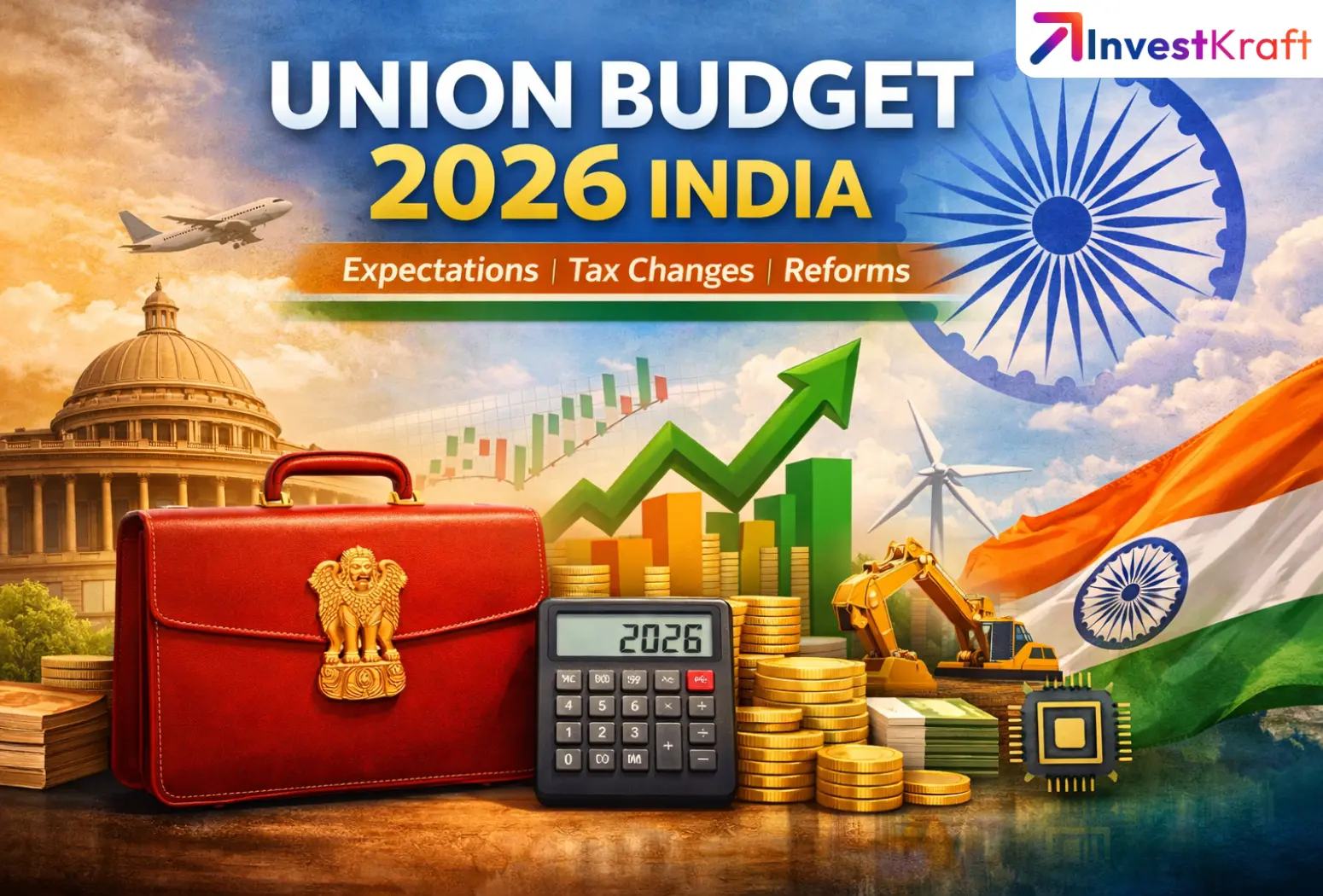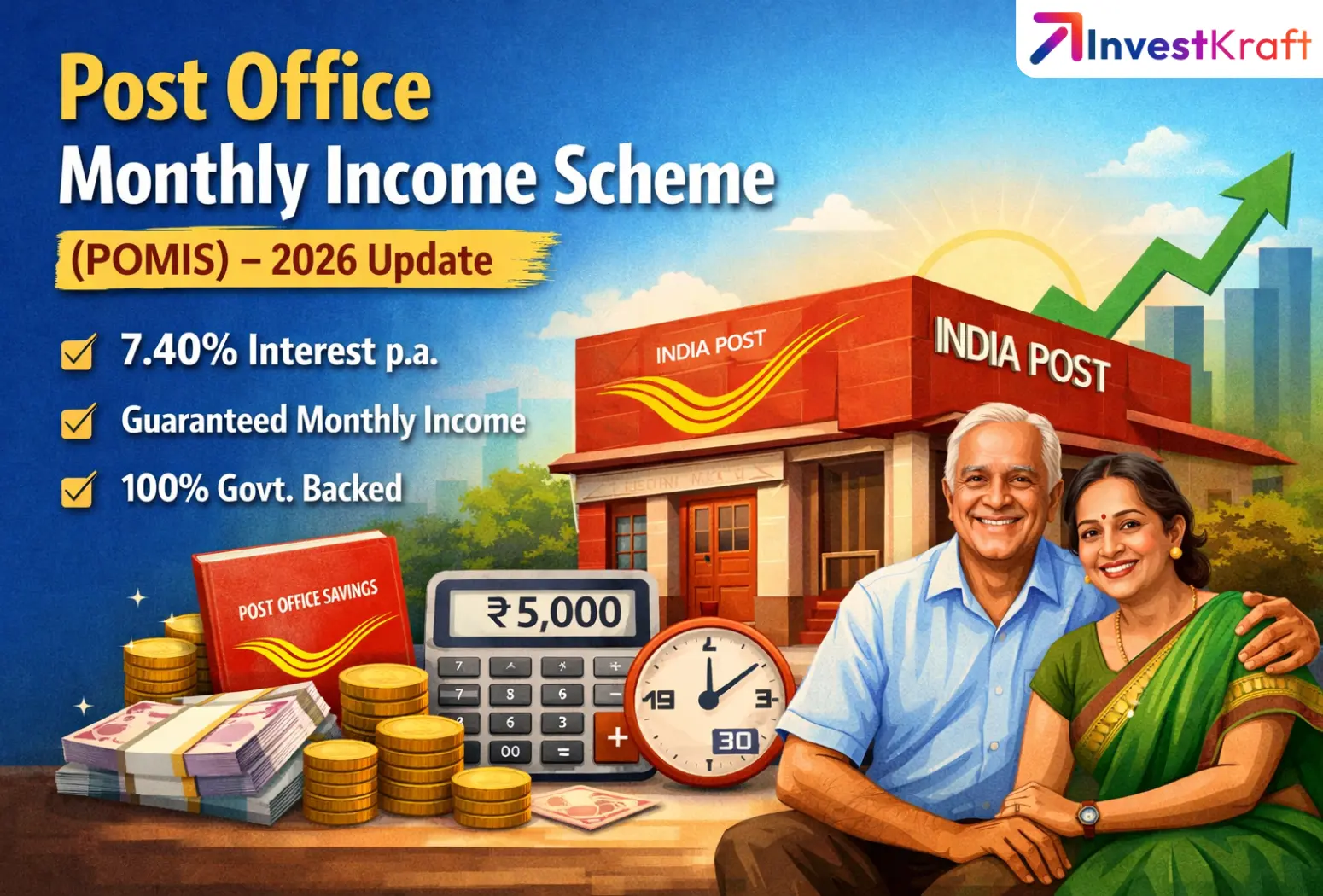GST Calculator
Do you want to find out how much Goods and Services Tax (GST) you owe to the State and Central Governments respectively? Are you having trouble figuring out the breakdown of the percentage-based GST rates? Do you need help in calculating the rate division between CGST and SGST to find out the correct IGST? Well, worry not! We have brought to you a simple-to-use GST calculator that runs on complex mathematics to help you get your GST issues sorted. The GST calculator from Investkraft can be used by everyone - wholesalers, manufacturers, buyers etc.
How Does GST Work?
Goods and Services Tax, commonly known as GST, is a type of indirect tax in India. It has replaced several other indirect taxes like excise duty, VAT, and services tax. The GST Act was passed by the Indian Parliament on March 29th, 2017 and became effective from July 1st, 2017. The Goods and Service Tax law is applied to the supply of goods and services. It is a comprehensive, multi-stage, destination-based tax, which is levied at every value addition.
GST is a single domestic indirect tax law applicable throughout the entire country. Under the GST regime, the tax is levied at every point of sale. In the case of intra-state sales, Central GST and State GST are charged. On the other hand, all inter-state sales are chargeable to the Integrated GST.
Now, let us understand the concept of GST along with how the GST calculator works in the following sections.
GST Calculator Formula
GST Amount = (Original Cost*GST Rate Percentage) / 100
Let's say you are purchasing a laptop that costs ₹10000, and the GST (Goods and Services Tax) rate is 10%.
Using the formula provided:
GST Amount = (Original Cost * GST Rate Percentage) / 100
Substituting the values:
GST Amount = (10000 * 10) / 100
= (100000) / 100
= ₹1000
So, the GST amount on the laptop purchase would be ₹1000.
How to Use the GST Calculator to Calculate Total GST?
By using the following simple steps, you can calculate the total GST value and post-GST value of a product/service with the help of the GST calculator by Investkraft:
- Select either “GST Exclusive” or “GST Inclusive” from the available options
- Enter the total GST amount in the respective column
- Select a tax slab for the product/service for which you want to calculate the GST amount
- Click on the “Invest Now” tab to find out the total GST value and post-GST value of the product/service
How is the GST System Beneficial for Buyers and Sellers?
The GST system is beneficial for both buyers and sellers due to the following reasons:
- Goods & Service Prices Reduced: GST has led to a decrease in the prices of goods and services. Previously, consumers had to pay separate taxes, but now they pay only one tax. This has made products cheaper, with some items falling under the 0-5% GST range. Packaged products like shampoos, toothpaste, and electronic items have also become cheaper.
- Uniform Pricing Across India: GST ensures uniform pricing across the country for products falling under its tax slab.
- Tax System Simplified: GST has simplified tax tracking and made it easier for consumers to know the amount of taxes they're paying. The system is computerized and allows you to see the tax amount on your receipt every time you purchase goods or services.
- Transparency in the Supply Chain: GST provides transparency in business transactions for traders, making it easier for them to pay GST along the supply chain.
- Businesses Can Take Loans Easily: Digitalization has made transactions easier for consumers and traders. GST records every financial transaction, making it easier for businesses to maintain their records. This makes it easier to obtain loans from banks or other businesses as the system has a history of assets and repayment ability.
- Easy Market Entry for Traders: Under the GST tax regime, the market processes are clearer and traders can easily enter the market.


FAQs on GST
A: You must use Investkraft’s simple-to-use and reliable GST calculator to calculate the GST value of the product/service you provide.
A: MRP contains all the taxes. It means GST is included in the MRP. So, there is no need to calculate GST on MRP.
A: The Goods and Services Tax (GST) is a value-added indirect tax that the Central and State governments collect on the consumption of goods and services.
A: India currently has 4 types of GSTs (Goods and Service Taxes) -
- State Goods and Services Tax
- Central Goods and Services Tax
- Integrated Goods and Services Tax
- Union Territory Goods and Services Tax
A: The composition levy is a way for small business owners to pay their taxes more simply and cost-effectively. If your business earns less than Rs. 75 lakhs (or Rs. 50 lakhs in some states), you may be eligible to use this method. Instead of paying taxes at the normal rate, you can pay a percentage of your earnings every quarter. This option is voluntary, but it can help make taxes less complicated and more affordable for small business owners.
A: It is worth noting that the current GST rate for gold and gold-related jewellery is three percent. Additionally, there is a five percent GST on the cost of making gold jewellery and a 7.5 percent GST on import duty. As a result, the total GST and duty implication on pure gold for customers is 10.5% of the total price.
A: It's worth noting that bank fees, including monthly account fees, ATM fees, and credit card interest, fall under the category of financial supplies and are not subject to GST. This means that banks aren't required to charge GST on these fees. In other words, these fees are considered input-taxed transactions and are exempt from GST.
Similar Calculator
Reach out to our Experts if you have any Doubts
Like the best things in life, Consultations @InvestKraft are free
Drop a Mail or give us a Missed Call & Begin your Investment Journey here







